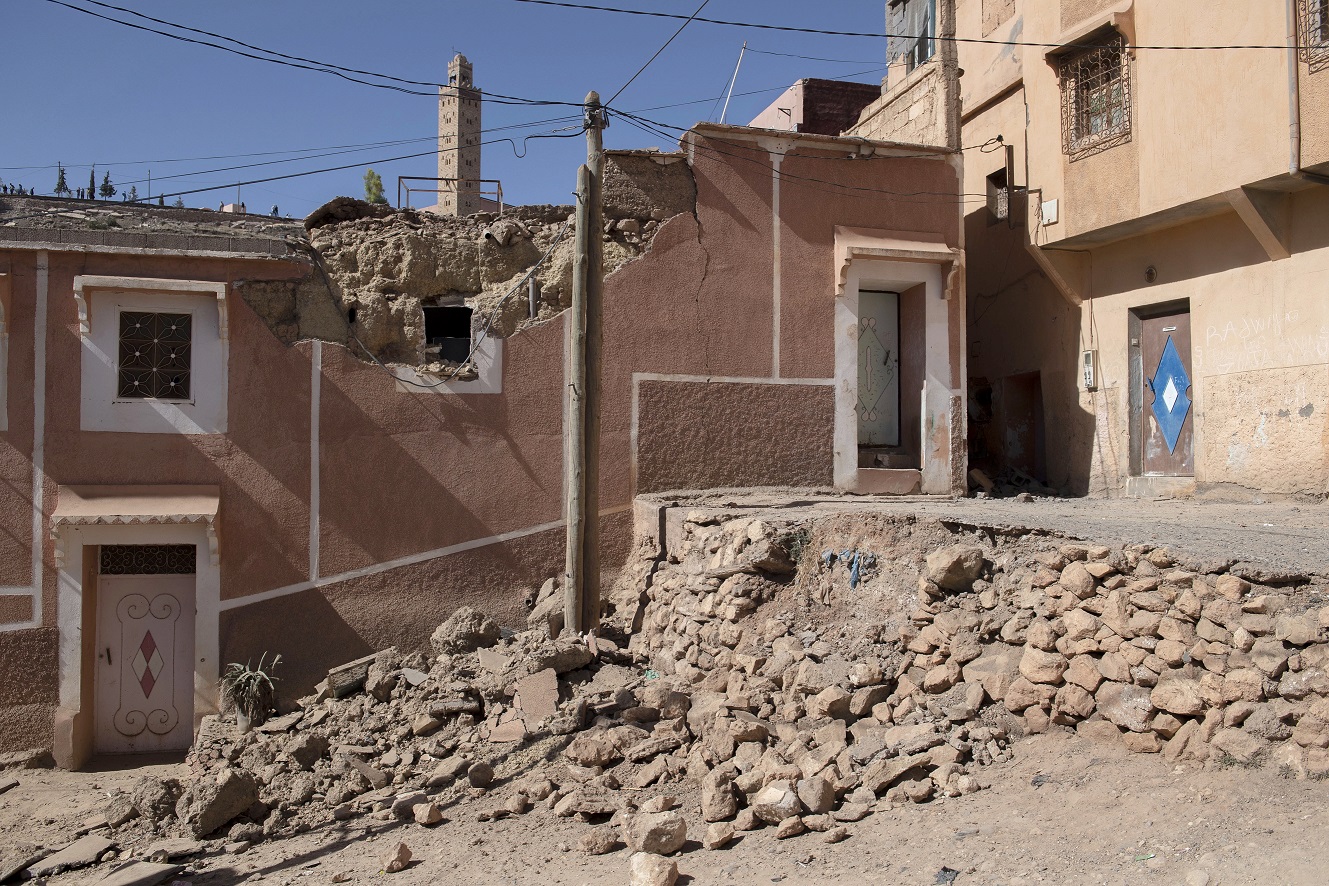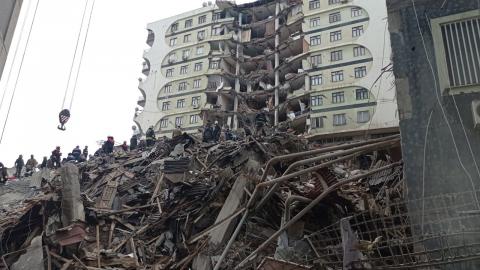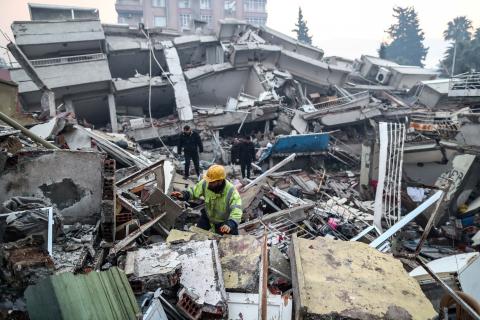Reactions: Earthquake hits Morocco, leaves hundreds dead
At around midnight (local time), a powerful 6.8 magnitude earthquake southwest of Marrakech, one of Morocco's main cities, shook the region, leaving hundreds dead and missing amidst completely devastated buildings and constructions.

View of damaged buildings after the earthquake in Marrakech, Morocco. The earthquake, with a magnitude 6.8 according to the USGS, damaged buildings from villages and towns in the Atlas Mountains to Marrakech. EFE/EPA/JALAL MORCHIDI.
David Rothery - terremoto Marruecos EN
David Rothery
Professor of Planetary Geosciences at the Open University
This earthquake was in the mountains about halfway between Agadir and Marrakech. It was about 500 km south of the boundary between the African tectonic plate and the Eurasian plate, but nevertheless it was a consequence of the northward collision of Africa into Eurasia in a place where the High Atlas mountains are being thrust upwards. This earthquake was magnitude 6.8, and there has been nothing bigger than 6.0 within 500 km of the epicentre since before 1900.
Neither people nor civil authorities are likely to have been well prepared for this, and I would be surprised if even modern buildings were built to be resilient to major ground shaking. We wait to learn whether landslides have taken many lives, in addition to buildings that were shaken down.
Carmen Solana - terremoto Marruecos EN
Carmen Solana
Volcanologist from the University of Portsmouth
Earthquakes in Morocco are not unusual, but this one is larger and close to the large city of Marrakesh. As with many other cities in the region, old buildings would not have any anti-seismic design, hence are very dangerous.
There is no connection with the recent Turkey earthquake.
The mountains where the earthquake occurred were a result of the African and the European plates crashing into each other and these forces produce earthquakes.
Joanna Faure - terremoto Marruecos EN
Joanna Faure Walker
Professor of Earthquake Geology and Disaster Risk Reduction, University College London (UCL)
Morocco lies in the north of the African plate that has been converging obliquely with the European plate for millions of years. Movement associated with the plate boundary can cause damaging earthquakes. There have been other magnitude 6 earthquakes in Morocco in the past few hundred years, and Morocco has also experienced shaking from earthquakes with epicentres outside the country including in Portugal.
When an earthquake occurs at night, people can be particularly vulnerable as getting out of their homes and navigating rubbles and debris in the dark adds to risk of injury and getting trapped.
The early death toll figures are likely to increase significantly as early information is limited and rescue efforts are ongoing.
Residents should be cautious returning into damaged buildings as some damage may not be visible and aftershocks of magnitude 5-6 should be expected. Large earthquakes can trigger other earthquakes along the same or neighbouring faults as stress transfer can bring other faults closer to failure. In an area already experiencing damage and reduced capacity for emergency services, vulnerability to aftershocks and triggered events can be higher than before the first event.
Mohammad Kashani - terremoto Marruecos EN
Mohammad Kashani
Associate Professor of Structural and Earthquake Engineering at the University of Southampton
The earthquake was magnitude 6.8 with 18.5 km depth, which is quite shallow. The shallow earthquakes are normally more destructive. The location is at the boundary of the Eurasian and African plates. Almost all earthquakes occur at the boundary of tectonic plates due to their movement.
It is too early to see the extent of damage. However, from what I’ve seen in photos and videos this very similar to the earthquake that occurred in February in Turkey. The area is full of old and historical buildings, which are mainly masonry. The collapsed reinforced concrete structures that I saw in the photos were either old or substandard.



